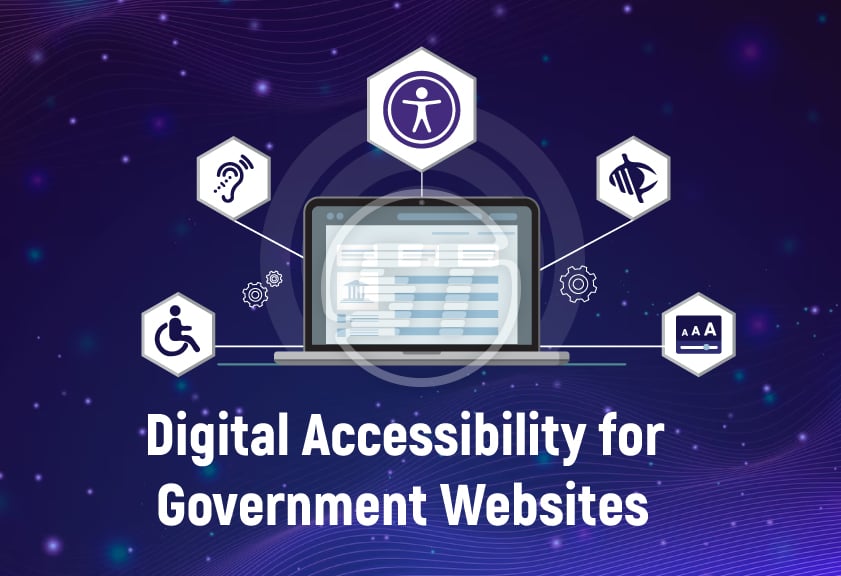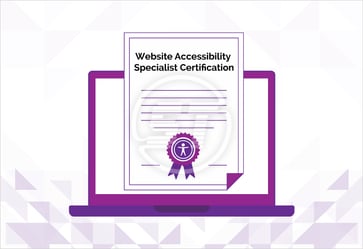Digital accessibility barriers are common, and they often arise due to a lack of consideration for how users with disabilities interact with websites. Improving digital accessibility for government websites is crucial because they serve as a primary resource for citizens seeking important information about public health, education, awareness, welfare, assistance, and various policies.
Addressing common digital accessibility barriers on government websites involves ensuring compliance with standards such as the Web Content Accessibility Guidelines (WCAG) and considering the needs of diverse users.
Important facets that need special attention!
Public services must be accessible to everyone!
Government websites offer various public services that are important for people to know and if websites are inaccessible then individuals with disabilities will not be able to access those services. Besides, they have mandates about existing and upcoming benefits for citizens to check.
Thus, government websites should adhere to the universal website design concept (WCAG standards) to improve user experience.
To create usable websites for everyone, web developers can create different user personas according to various demographics in order to serve the target customers accurately.
Compatibility with all major assistive devices is needed!
Not only one or two but every assistive device should be able to interact with government websites. The software or tools are meant to translate content for physically disabled users and thus, the websites ought to be accessible via this tools/software.
A few individuals prefer voice control, whereas some need touchscreen or eye-gaze monitors. Braille conversion can be a requirement for some, while others may want clear voice commands. Different users require distinct assistance and thereby government websites must be perceivable, operable, understandable, and robust for every user using any assistive technology.
Adherence to compliance requirements is a must!
A website remains accessible when its continuous testing and remediation happens. Regular content and technology updates create scope for accessibility issues, resulting in compliance and legal problems.
Missing alt text, navigation structure issues, poor color contrast, outdated content, screen reader compatibility, etc. are some of the profound reasons behind lawsuits and other legal actions against a government (or other) website.
Government websites are required to comply with the latest WCAG standards not only to avoid consequences of non-compliance but to set benchmark for other private sector websites.
Survey data that shows status of inaccessible government websites!
Government websites ought to be compliant with the ADA (Americans with Disabilities Act) guidelines in order to cater to every citizen equally. Their communication must be comprehensive for people with disabilities and others. Inaccessible websites create hinderances and limit the abilities of disabled users from accessing crucial information and services.
“For most of your readers, magnify the experience of the frustration you normally experience with government and increase it by like five or 10 times the magnitude, and you’ll have an idea of what we’re dealing with!”
And this is not it, there are myriad such testimonials available that confirm the inaccessibility of various government websites.
According to Barriers to Digital Inclusion Survey 2023 done by American Foundation for the Blind (AFB), education, news information, employment, housing, banking, travel, emergency alerts, and almost all government verticals have inaccessible websites (if not fully then partially and not all but many of them).
AFB took survey on some groups of people with disabilities and assigned different tasks to them, including commerce-related, employment-related, transportation, and many other. And there were significant numbers of barriers users found while performing each task.
For instance, 200 participants were part of employment-related task. They were asked to search and apply for jobs via a website. Out of 200, 106 reported occasional barriers on the website and 66 reported frequent barriers. And through mobile app (for job searching), out of 85 participants around 21 users couldn’t apply for the job due to various available barriers.
Strategies to address accessibility barriers!
Provide text alternatives
Barrier: Non-text content like images, videos, or graphics lacks description.
Solution: Government websites are the authentic source for several news reports and data. Inaccessible reports and data in the form of images, graphics or videos deprive many users from the crucial information. Thus, ensure every non-text element has meaningful alt text, captions, or descriptions thereby users with visual impairments can access the content correctly and complete the required tasks properly.
Ensure keyboard accessibility
Barrier: Some elements (such as dropdowns, buttons, etc.) cannot be accessed without a mouse.
Solution: Make all interactive elements (forms, menus, buttons) navigable and operable through keyboard controls. This is crucial for users with motor disabilities. At times, it becomes difficult for many users to access and fill forms to claim their benefits.
According to Mr. Danielsen, “We’ve been involved in litigation with some states where in certain situations, because a government entity has a website that you need to interact with and fill out forms on to access benefits, and blind people have literally lost benefits that they’re entitled to because of inaccessibility.”
Provide clear visual indicators for focus.
Barrier: Users can’t see which interactive element they’re focused on when using the keyboard.
Solution: Ensure visible focus states for links and interactive elements to help users understand where they are on the page.
Color contrast
Barrier: Text blends into the background, making it hard to read for people with visual impairments.
Solution: Use high-contrast color schemes (a minimum contrast ratio of 4.5:1 for normal text) so that content is easy to read for users with low vision or color blindness.
Use descriptive links
Barrier: Links like “click here” provide no context to screen reader users.
Solution: Create descriptive links that convey purpose, for instance, “Download the annual report”, so users can navigate effectively.
Caption and transcribe multimedia
Barrier: Videos and audio files lack captions or transcripts, excluding deaf or hard-of-hearing users.
Solution: Provide captions for videos and transcripts for audio files to make content accessible to users with hearing impairments. American sign language must be used with videos since many users rely on it.
According to Brianne Burger, the advanced learning director for the nonprofit Deaf in Government, “There’s a disparity in how important information is relayed to those with a hearing disability, especially during live video press conferences.”
She stressed on the importance of closed captioning with video content.
Responsive design for screen readers
Barrier: Inconsistent or poor user experience for screen readers users.
Solution: Regularly test the website using screen readers (example: JAWS, NVDA) and ensure that the navigation order and content reading flow are logical for users with disabilities.
Avoid auto-playing media
Barrier: Auto-playing media can be disruptive, especially for people with cognitive disabilities or using screen readers.
Solution: Disable auto-playing audio / video or provide users with a clear way to stop them.
Accessible document formats
Barrier: Downloadable content (PDFs, word documents) is not accessible.
Solution: Ensure all downloadable documents are accessible by providing structured headings, alt text, searchable text, etc. Since government websites have crucial documents that must reach every citizen. Visit PDF document remediation service.
Consistent navigation
Barrier: Complex or inconsistent site navigation.
Solution: Provide consistent navigation structures across all pages, so users with cognitive impairments can easily learn and predict how to navigate.
Test with real users
Barrier: Developers may overlook barriers that impact real users.
Solution: Regularly test the site with people using assistive technologies and perform usability testing with diverse user groups.
Read more testimonials and facts published by Government Technology (a sister news site to Governing).
In a nutshell,
Addressing accessibility barriers will help government websites to be more inclusive and ensure that every citizen will access critical public services and information. Moreover, accessible government websites will set a benchmark for other websites to incorporate accessibility into their core processes.
We provide managed web accessibility remediation solution including manual ADA WCAG audit, remediation, consulting, monitoring, VPAT /ACR, PDF / documents remediation and support for ADA, WCAG (2.0, 2.1, 2.2) & Section 508 compliance. From enhancing user experience to ensuring inclusivity, let’s embark on a journey to make digital world accessible to everyone, including people with disabilities. Request a website accessibility remediation quote, or reach out us at [email protected].


